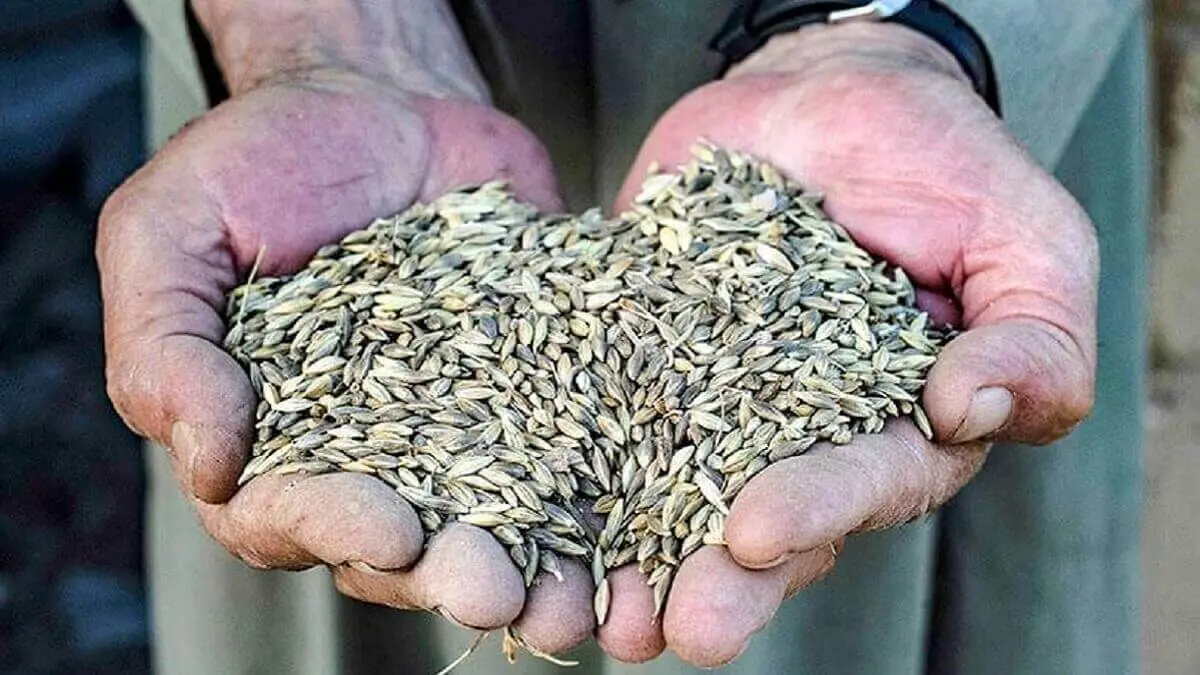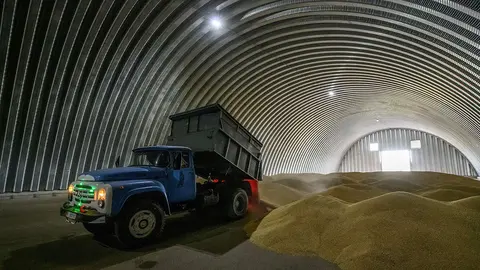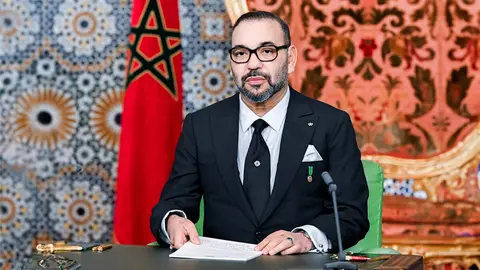Disaster preparedness: a new approach inspired by ancient civilisations

Ancient wisdom drawn from the biblical story of the catastrophic famine in Egypt can help guide countries today as they prepare for looming climate fluctuations and other forms of instability that can have sudden and devastating consequences.
The oral transmission of information over thousands of years, embodied in the madrasa, highlights useful guidelines for effective preparedness and, ultimately, for saving lives or even civilisations. One of the first fundamental lessons is that the cost of preparedness today is less than the cost that will be incurred when disaster strikes. Egypt's preparation before the famine, in a context of relative price stability, was a decisive factor in its resilience during the period of extreme scarcity and subsequent price increases.
The biblical experience of Egypt also indicates that, even with Joseph's correct interpretation of the pharaoh's dream and his prior warning, the famine came suddenly, as if the previous period of abundance had never existed. Even when we are aware of an impending catastrophe, as is the case with the current climate crisis, its devastating effects make us feel as if there had been no prior warning; no matter how many blessings there are, their sudden end can be so severe that it makes us feel as if the times of abundance never existed. This highlights the importance of preparation and the measures we take before a crisis strikes. After all, once the crisis has struck, what happened before seems to have passed and been forgotten.
At that time, Egypt suffered from the people's lack of appreciation for basic measures, particularly the storage of surplus food in anticipation of the impending disaster. The people did not recognise Joseph's merit until they all realised that his vision, supported by the pharaoh, was what had saved them. It is wise for today's leaders not to expect gratitude for their pre-crisis preparations, but to be convinced that the true impact of those preparations is only appreciated when adversity strikes, and only then are their merit and the correctness of their vision recognised.
Madrasī interpretations of the ancient Egyptian experience indicate that famine did not distinguish between rich and poor; everyone suffered without exception. Instead of indulging in luxury during the years of abundance, the population was required to be content with the bare necessities, while the surplus was saved and stored and basic provisions for survival were accumulated. This highlights a fundamental wisdom: excessive consumption in times of abundance weakens our societies' ability to accumulate and conserve the resources necessary for life. Even if storage measures are taken, excessive luxury and unbalanced consumption during periods of abundance show their negative effects as soon as scarcity sets in.
At that time, Egypt adopted a system based on the imposition of a fixed tax of 20% during the period leading up to the crisis, in preparation for the catastrophe. The simplicity and comprehensive nature of this measure facilitated its organisation and control, and it was considered fair and socially acceptable.
Egypt's storage efforts were not limited to a single type of cereal, but covered a wide range of foods and commodities preserved using innovative methods. Diversifying products to meet different human needs increases the chances of survival by reducing sharp price fluctuations and dependence on a single product or a small number of products. The biblical text also indicates that food storage methods varied according to the type of food, but the general rule was to store food close to where it was produced to ensure its quality.
This approach is one of the fundamental pillars of disaster preparedness strategies with regard to storage, as the Egyptians relied on a decentralised local system. Each city and town had its own facilities. Organising storage in this decentralised manner involved the inhabitants of neighbouring areas in the collection and maintenance of facilities, reducing the likelihood of panic in the event of a disaster. In addition, this system allowed each area to preserve its products using local resources in the storage processes, such as natural materials that are still used today, such as mercury (as an insect repellent), salt earth, dust, ash and wood shavings.
Warehouses were often built underground. Given the climatic conditions described by scientists, such as the rapid increase in heat bubbles (which we are seeing in Morocco) and strong winds, we should seriously consider building underground storage facilities.
It should be noted that, even with ancient Egypt's dependence on the construction and maintenance of local warehouses, the distribution of goods necessary for the survival of the population was essential to achieving regional balance and reducing waste. This intelligent model of effective functional division of responsibilities between the local and national levels is very much in line with the decentralisation system currently being implemented in Morocco.
At the time of the prophet Yusuf, Egypt did not immediately open its warehouses in response to demand or protests from the population when they felt the effects of famine. The population patiently endured the early stages, and the warehouses were only opened when the famine worsened. This intelligent strategy enabled Egypt to successfully overcome the seven-year crisis, as it was understood that in order to deal with the threat of famine, it was necessary to conserve resources for times of acute crisis.
Therein lies the wisdom: large emergency warehouses must establish precise criteria for opening. Opening them prematurely can deplete resources ahead of time and expose society to the risk of shortages during prolonged crises.
The location of supply warehouses is critical to crisis management, as demonstrated by the Moroccan experience during the recent earthquake, where aid took longer to reach areas far from regional capitals than those closer to them, a recurring problem in the field of humanitarian aid. These remote areas are often located on the borders of other municipalities that also suffer from their remoteness from regional centres. It is therefore necessary to create storage centres in strategic locations that allow easy access to these remote areas, which will contribute to social stability by reducing waves of displacement during crises and alleviating pressure on local, regional and national capitals.
Finally, the biblical texts and explanations of the madrasas do not merely describe the personality of the prophet Yusuf, but also offer a model of effective management that communities need to deal with major disasters. The prophet Yusuf demonstrated that attention to detail is an indispensable quality for national leaders, and he did not hesitate to become a trader in wheat and basic foodstuffs when the public interest required it. After being entrusted with the mission of saving Egypt from certain disaster, he travelled from city to city, from place to place, throughout the Egyptian territory, motivating and helping its inhabitants in their efforts to participate in the rescue of their civilisation. He succeeded in turning the common goal into a tangible reality, thus avoiding widespread panic and preserving the survival of civilisation.
Our current leaders need a global humanitarian vision and a deep understanding of local situations, as well as the need to communicate directly with people through travel and presence in the places they serve. They should not rely solely on the management of storage facilities as a bureaucratic function, but on committed leadership that focuses on practical and rapid solutions to meet emerging challenges.
Religious texts and explanations from madrasas reveal how the influence of Egyptian planning spread to neighbouring countries. The rescue was not limited to Egypt, but encompassed entire towns and regions that benefited from Egypt's strategic reserves. The viceroy and the pharaoh allowed foreigners to enter the country to purchase supplies necessary for survival, which not only ensured the continuity of their communities but also provided essential income to Egypt, allowing it to prosper in the years following the end of the famine.
The Madrash describes the viceroy as a model of compassion and generosity, gifted with kindness in his words and great insight in assessing the long-term consequences of decisions. In managing food distribution, he combined mercy and precision, balancing the expenditure necessary to ensure survival with careful calculation to avoid the depletion of resources.
What impresses us most about this historical figure is his interest in direct contact with all sectors of the population in different regions of the country, for which he constantly travelled long distances and provided support according to the needs of families and children. The ability of a leader to save neighbouring countries, as well as his own people, remains an eternal model from which we draw inspiration today, four thousand years later, as we face similar threats.
Perhaps there are valuable lessons in this story for our beloved Kingdom of Morocco, which can draw on the past and the experience of humanity to build reserves that will guarantee the food security of its people in times of need. Morocco, with its human diversity and unique environment, which brings together the different vital areas of North Africa and the Middle East, and thanks to its historic commitment to the unity of the countries of the South, can be a food storehouse that not only saves itself but also helps neighbouring countries, if it manages to store its resources in anticipation of the crises that the future may bring.
Youssef Ben Meir is president of the Grand Atlas Foundation and resides in Morocco.



